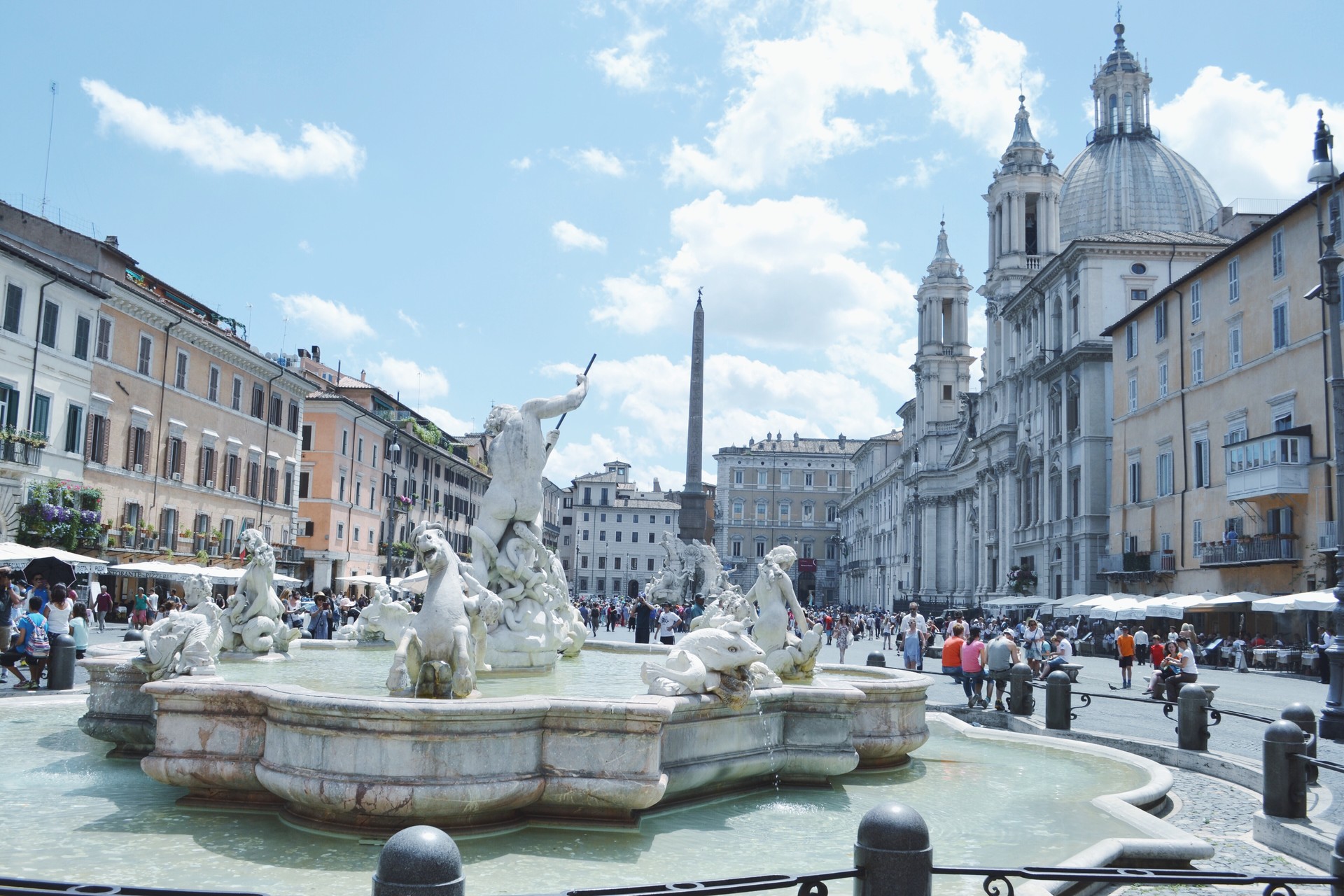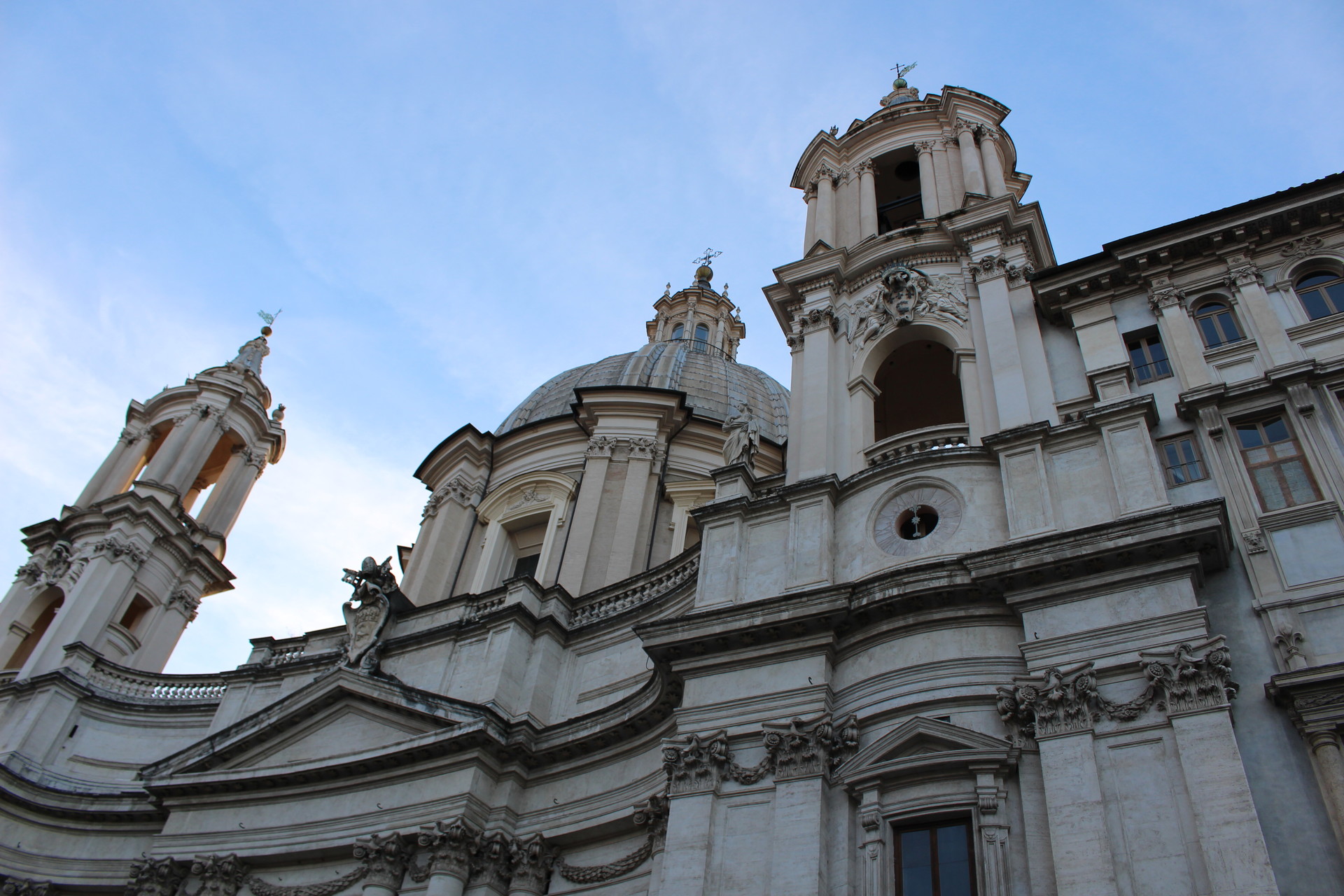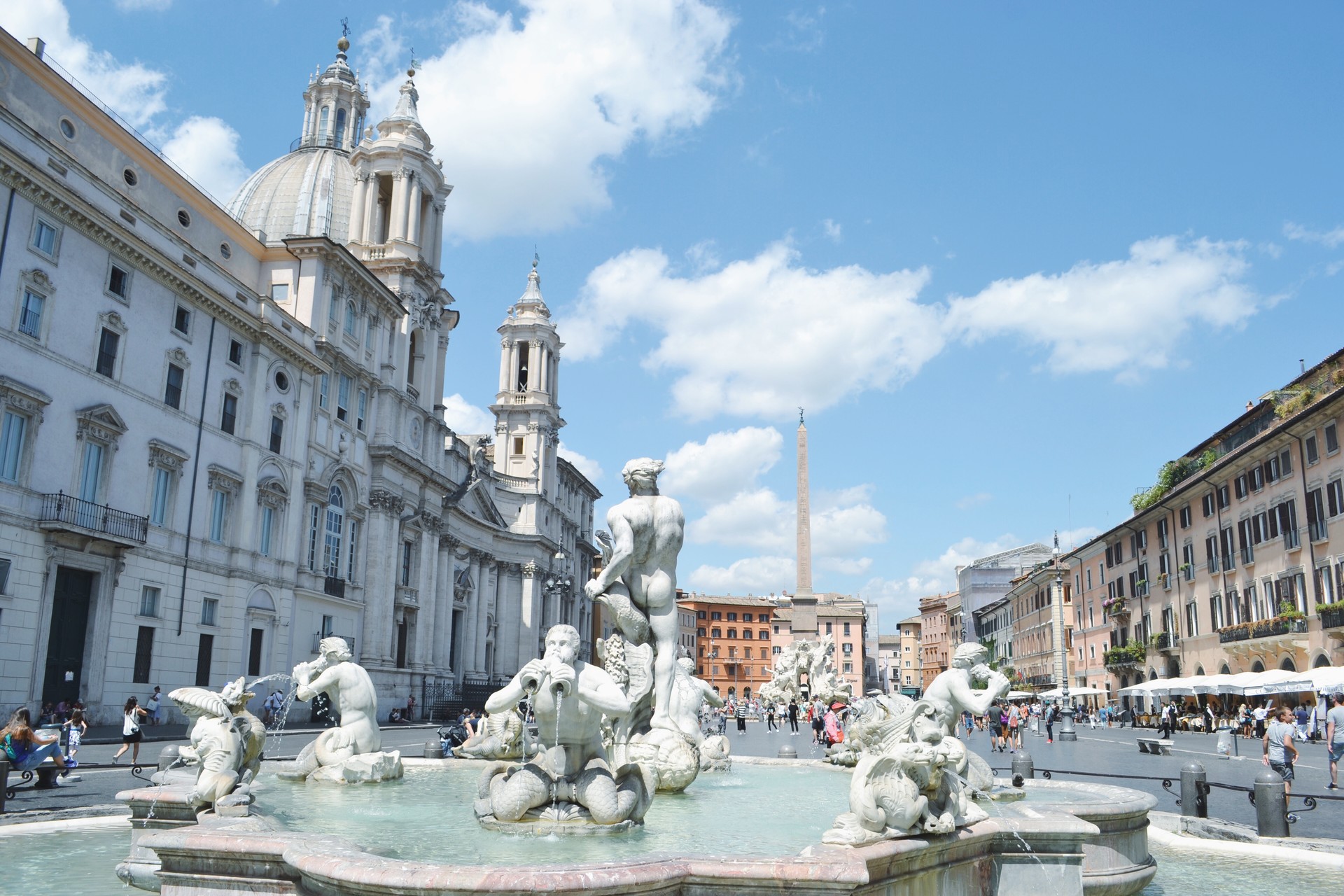Piazza Navona
Today I would like to explain a bit about my favourite square in the whole of Rome. It is my favourite part because of its beauty but mostly because of the history behind it. Every single part of it has some very interesting history behind it and I wanted to enlighten you all so if you happen to visit this square you can show off how much you know about it.
History of the Square
The best part of the square is the fact that it looks nothing like what it used to look like thousands of years ago. In the first century this square used to be a stadium called “Stadio di Domiziano”, translated in English as the Stadium of Domitian. The Emperor Domitianus demanded its creation as a gift to the Romans. The stadium was smaller than the Circus Maximus, however, it was designed in a similar, oval shaped way. It was created for athletic purposes. It was only after fire-damage to the Colosseum that for a few years the stadium was also used for gladiator shows.
The Stadium was large enough to hold 30. 000 spectators. In the third century, it was later reconstructed by Alessandro Severo, who changed the name of this stadium to Circus Alexandrinus.
During the medieval times, the stadium started to slowly collapse and buildings were built in its place. This is what we know today as Piazza Navona. It is home to one of the most important churches in Rome “Sant'Agnese in Agone”, one of the most architecturally interesting fountains called Fontana dei Quattro Fiumi. It is also home to Fontana del Moro, Fontana del Nettuno.

Fontana del Moro
History of the Church
La chiesa di Sant’Agnese in Agone:
The Church of Sant'Agnese in Agone is a baroque church completed in 1672. The construction of the church went through the direction of three architects, Rainaldi, Borromini and Rainaldi's son, Carlo. It is said that this church was built in dedication to Saint’Agnese, a young girl that died in the Stadium of Domitian, and who was later martyred in that same place.
The interior of the building is very rich in terms of decoration. The plan of the church is in a Greek cross design, surrounded by marble sculptures and a beautiful gold altar.
There are many important statues in this church such as Saint Agnes. There is also a shrine dedicated to this young martyr, with her skull and a marble relief made by Alessandro Agardi.
Furthermore, the church was also build as a request of Pope Innocent X, for it to be the future home to his tomb.
The Dome, designed by Borromini is completed with a set of beautiful frescos on the Assumption of Mary started by Ciro Ferri in 1670 and completed by Sebastiano Corbellini in 1689.
There is so much history and art in this very church that I honestly believe it to be one of the most beautiful churches in Rome.

History of the fountains
Fontana dei Quattro fiumi:
The Fontana dei Quattro fiumi (in English known as the Fountain of the four rivers) was projected and created by Gianlorenzo Bernini in 1651. This architect created this masterpiece as a request from Pope Innocenzo X Pamphilj. The fountain is a symbol of the papal authority throughout the world. In fact each marble statue is supposed to represent four rivers: Nile (Africa), Danube (Europe), Ganges (Asia), and Rio de La Plata (America). They are the bases of the beautiful, Egyptian obelisk ornamented with a bronze dove, a symbol of peace and the emblem of the Pope.
This fountain is probably one of the most interesting fountains you will read about. I remember going to Piazza Navona with my mum and she told me that there is a funny story behind this fountain. Legend has it that Bernini was jealous of his rival Borromini (master architect) who was asked to project the Chiesa di Sant'Agnese in Agone. Therefore, out of spite, jealousy and anger Bernini supposedly created the Statue that represents Rio de La Plata with his hand in the air as if he was protecting himself from the works of Borromini. This is supposed to be insulting, as if the building were to collapse.

Fontana del Moro:
This fountain, based at the southern part of the square, is also part of the works of Bernini, again under Pope Innocenzo X’s request. This fountain was sculpted in 1654 over the previous, uncompleted fountain created by another architect called Giacomo della Porta. This fountain consists of a figure that is part human and part marine, and he is strangling a dolphin with its legs. This gigantic, central figure is named the "moro", also known as a Moor / African. It is said that the facial features of this figure seem like those of an African man. This figure is standing in a shell, and is surrounded by four titans also in shells. There is water coming out of the strangled dolphin’s mouth demonstrating it’s strangled situation. There is always a reason behind every small detail Bernini adds to his masterpieces. This fountain however is a replica, and all the original pieces are held in the fountain of Villa Borghese in 1874.
Fontana del Nettuno:
Fontana del Nettuno, also known as Fontana dei Calderai is located in the north end of the square. For anyone who loves Greek mythology, you will find this fountain fascinating. The initial plan of this fountain was to provide the citizens of Campo Marzio with fresh water. It was then thought to reconstruct the fountain in order to enhance it. Antonio della Bitta is the sculptor that created the main statue of Neptune fighting an octopus in 1878. The remaining eight figures were sculptured by Gregorio Zappala. There figures included nymphs, horses and cupids.

More Information:
For more information about Piazza Navona I would highly recommend you go to the tourist shop next to the Chiesa di Sant’Agnese in Agone. On the right hand side of this church, there's a small little tourist shop with a gladiator outside. Inside they have the model of how Piazza Navona used to be like as a stadium, and the staff will enlighten you about its history further. Also they have amazing books on Rome that show you how the most important historical sights in Rome used to be years ago.
Piazza Navona:
Piazza Navona today is considered to be one of the most popular squares in Rome. Of course it is partly because of its incredible history that many tourists come to visit but also because it is strategically situated in the old town center of Rome. Piazza Navona is surrounded by little restaurants, bars and shops. Do not be fooled, the restaurants in the square itself are not worth going to, they are a complete rip-off. However, if you walk towards "Corso Vittorio Emanuele" and "Chiostro del Bramante", you will find a series of cute pizzerias that are certainly worth going to for dinner.
Piazza Navona is alive in the evenings, especially at the weekends. If you are in Rome i would suggest going back to this square in the evenings to take in a bit of "Roman nightlife". It is also near "Campo dei Fiori", a square where all the teenagers go to drink. There are many bars here with outdoor seating and shisha!
Photo gallery
Content available in other languages
- Italiano: Piazza Navona
- Polski: Piazza Navona
- Español: Piazza Navona
- Français: Piazza Navona
- Português: Piazza Navona
Want to have your own Erasmus blog?
If you are experiencing living abroad, you're an avid traveller or want to promote the city where you live... create your own blog and share your adventures!
I want to create my Erasmus blog! →





















Comments (0 comments)